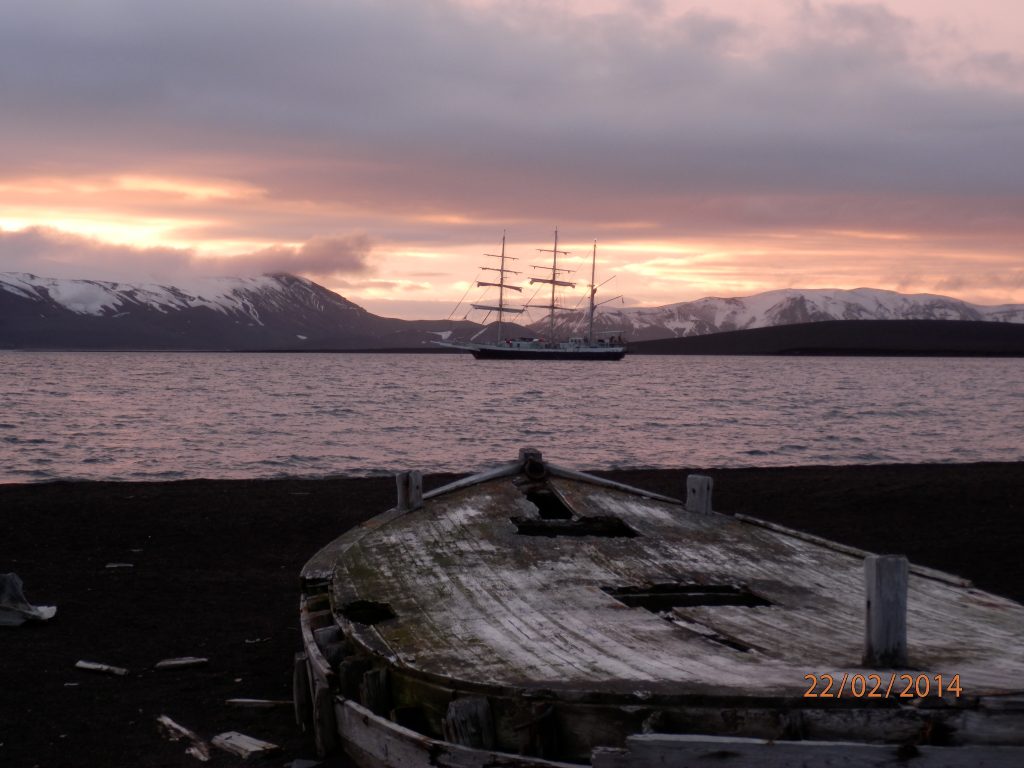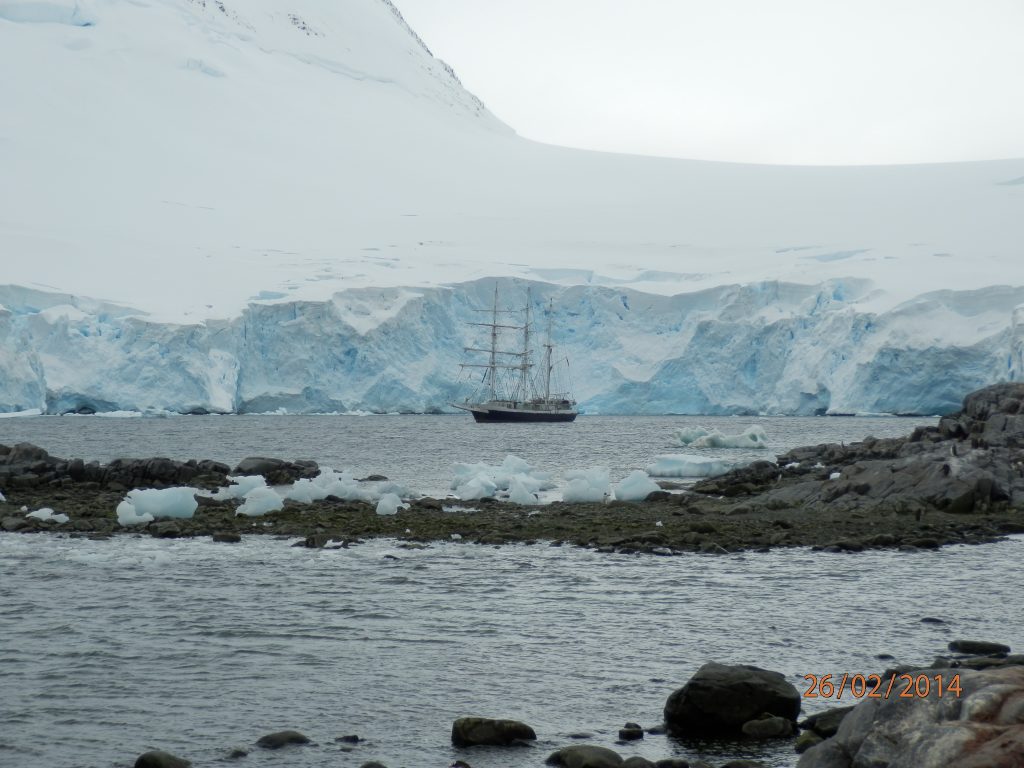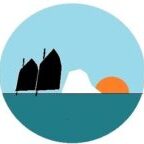USHUAIA, ANTARCTICA AND THENCE ON LEAVE (15 MAR 2014)
First of all, my sincere apologies to my loyal reader for not having posted anything for weeks. The Iridium dome is completely dead, and the replacement which was to be brought down to Ushuaia prior to our departure for the Antarctic was apprehended by Argentine customs as an illegal import, and is awaiting payment of a hefty “fine” (in US$ of course) in order that it can be released. So, in short, I have had no comms.
Anyway, we spent a productive few days in Ushuaia, tidying up the ship and doing some essential maintenance in preparation for our departure to the Ice.
The new crew arrived, and with them our expedition leader, Skip Novak, and a second ice-experienced officer, Piers Alvarez-Munoz, who in a previous life had been a deck officer with the JST, and since then has worked in the British Antarctic Survey ships, as well as various passenger ships working in the Antarctic.
We left Ushuaia after the usual training, with final preparations for sea still being completed during the 7-hour (and $6600) pilotage. With some severe weather forecast in the Drake Passage for a couple of days’ time, we carried on straight out to sea to get south of it (a smart move, as it turned out – one of the regular cruise ships which left the following day got a real battering and had her bridge windows stove in, having to limp back into Ushuaia). The numbers of voyage crew seemed to half as many went down with seasickness, some not to reappear until we got into the sheltered waters of the Bransfield Strait. We cracked on with square sail set, but also with the engines running most of the time to ensure enough speed to get south of the weather. After 3 1/2 days on passage, we got our first glimpse of the South Shetland Islands and our first destination, Deception Island. So in the late morning of the 21st Feb, we entered this flooded caldera (still active – last erupting in the 60s). Unfortunately another vessel was due in to carry out landings that afternoon, and only one ship is allowed to land people at once, so we went for a tour of the caldera for a few hours, then landed our troops in the evening after dinner. I had to hover the ship off the beach as there was an onshore breeze which would have made anchoring impractical, so didn’t get ashore to explore the old whaling station and meet my first penguins, but all the voyage crew went, and once they were back on board we crossed to the other side and anchored on a relatively shallow bank off the Spanish research base.

Photo – Stu Sheldon
From Deception we headed down to the Gerlache Strait, encountering light concentrations of ice – mostly growlers and bergy bits, as we got further south towards our next destination of Cuverville island. This was a fantastic anchorage surrounded by grounded bergs, and as we came in to anchor there was the deep rumbling of an avalanche on the high slopes opposite, followed by an impressive cloud of tumbling snow. This was our second landing, and this time I got ashore to commune with the Gentoo penguins and have a short stroll with Stu once he got a break from running the boat.
After a peaceful night here, we weighed and headed off towards the Neumayer channel and Port Lockroy. Down the Neumayer were some bands of brash ice, which, whilst they consisted mainly of very small bits of ice, also contained a fair number of growlers, so Nellie’s unreinforced hull had to be gently nursed through at minimum speed, with Skip up the foremast directing me towards the thinnest parts.
We arrived at Port Lockroy in the late afternoon, so anchored and settled in for the night in this very sheltered bay, surrounded by impressive ice cliffs. This is home to the former British “Base A”, established in the latter years of WW2 to stake a British claim on the peninsula, and which is now the flagship of the British Antarctic Heritage Trust, and the southernmost UK post office. We landed our crew the following afternoon (having entertained the staff on board for lunch), and everybody enjoyed the museum, and the opportunity to buy souvenirs at the gift shop and post their postcards.
It was whilst we were here at Lockroy that it became evident that our level of water consumption was unsustainable, so we had to introduce limits on showering and laundry, and the next morning went out into the Gerlache Strait to steam up and down for 24 hours to make some water; normally we only make water when underway and clear of land, to reduce the chance of contamination and the membranes getting clogged with algae. However, as with many of our usual procedures, we would have to make exceptions for the rest of this challenging voyage.
We went back into Lockroy for another night, and did some more landings at Jougla Point (more penguins).
Our next destination was to be the Argentine Islands, specifically Vernadsky Station, the Ukrainian base. We set off on the morning of the 1st, but unfortunately my body had chosen my birthday to get the stomach bug that had been doing the rounds on board, so I spent the whole day in isolation whilst Jon the mate ran the ship. I didn’t miss much though, as most of the day was in blizzard conditions and the narrow Lemaire Channel was blocked with thick brash ice, so we had to turn back and re anchor at Lockroy.

Photo – Stu Sheldon
We made another attempt the following day, and this time, in perfect sunny and calm conditions, we made it: the scenery down the Penola Strait and Lemaire Channel was incredible. Once through, we landed at Petermann island, home to Gentoo and Adelie penguins, as well as an Argentine refuge hut and a memorial to 3 members of BAS who died here in the 80s. The tiny cove where we landed was called Circumcision Harbour, and was where the French expedition in the Pourquoi Pas spent the winter.
From there we continued down to the Argentine Islands and anchored, though not where originally planned, as both entrances to that particular bay were blocked with icebergs.
The following morning we landed at Vernadsky, to entertain and be entertained by the Ukrainian Base staff. This base used to be the British Faraday base, and was sold to the Ukrainians in the 90s. It still retains it’s British pub upstairs, and this is where most of our visitors ended up! The Ukrainians were on a bender that day as the news had just broken that the Russians were massing on the Ukrainian border, apparently intending to invade.
After we had entertained the slightly addled base commander to lunch, we got under way to head back to Lockroy, in a rising wind. This had unfortunately driven a lot of brash back into the Lemaire channel, so we had to turn back, our path blocked again. Our approach back into the anchorage was exciting, in the dark with a near gale blowing, but we made it and I managed a textbook running moor with both anchors, which made for a peaceful night. Fortunately the bergs which had made the previous night fairly restless had been blown right out of the bay.
The next day the wind had dropped again, and it was time to start thinking about our return to civilisation. This time we took the outside route back to the Gerlache Strait, avoiding the possibility of the Lemaire still being blocked. Whilst pitching and rolling in the ocean swell, we managed to lose one of our life rafts over the side, so we had a special half-hour recovering it onto the stern platform before continuing. Overnight we went up the Gerlache Strait and back into the Bransfield, before picking a convenient gap in the Islands to head out to sea. The passage back across the Drake was challenging- a NW’ly gale off the South Shetlands halted our progressive for a while, before we managed to push on to the north for a few days; then on the last day a W’ly gale helped us home into the Beagle channel. We had a bash up the channel against strong headwinds to get back to Ushuaia after dragging anchor in 50kt gusts at 5 o’clock in the morning!
Now Stu and I are sitting in a stationary coach in the Chilean half of Tierra del Fuego, waiting for a ferry to take us to the mainland whilst a gale blows around our ears. As I write, 12 hours after leaving Ushuaia, we are already supposed to have arrived in Punta Arenas. Of the ferry there is no sign.
